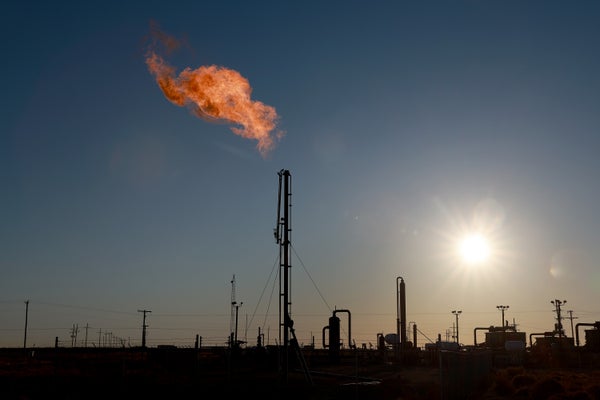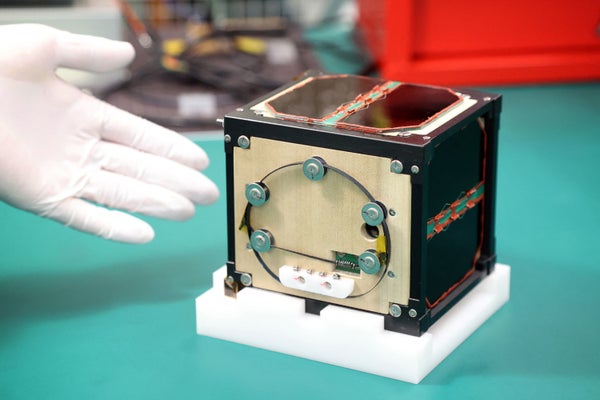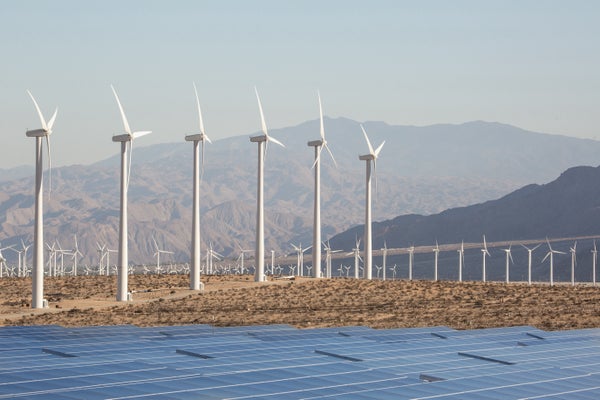August 19, 2024
2 min read
New Satellite Will Track Methane Super Emitters
Tanager-1 is the first in a series of satellites that aim to pinpoint major emitters of carbon dioxide and methane, major greenhouse gases
Natural gas is flared off during an oil drilling operation in the Permian Basin oil field on March 12, 2022 in Midland, Texas.
CLIMATEWIRE | A new satellite that can pinpoint greenhouse gas super emitters took off from California on Friday, adding another tool to global efforts to tackle the drivers of global warming.
Tanager-1, which launched alongside SpaceX’s Transporter 11, can detect major emitters of carbon dioxide and methane, a highly potent gas that is 80 times more effective than CO2 at trapping heat in the atmosphere. It was deployed through a coalition involving Carbon Mapper, Planet Labs and NASA’s Jet Propulsion Laboratory, with funding from groups such as Bloomberg Philanthropies and the Children’s Investment Fund Foundation.
The satellite will focus on facilities that spew out more than 100 kilograms of methane an hour and will help identify the source of those emissions, such as a pipeline leak or flare from a power plant, according to Carbon Mapper. It’s the first of many such satellites the nonprofit hopes to launch, with plans to make the resulting data publicly available online.
On supporting science journalism
If you’re enjoying this article, consider supporting our award-winning journalism by subscribing. By purchasing a subscription you are helping to ensure the future of impactful stories about the discoveries and ideas shaping our world today.
Tanager-1 is seen as a complement to MethaneSAT, a satellite supported by the Environmental Defense Fund and Google that helps locate and quantify emissions at a wider scale, such as an entire oil and gas basin.
Riley Duren, Carbon Mapper’s co-founder and chief executive, compared Tanager-1 to a telephoto lens that’s designed to zoom in and identify the origin of emissions within 100 feet, making it easier to see super emitters that might go undetected.
“Super-emitters are potential low hanging fruit for action,” Duren said. “There’s a relatively small number of them. And if you know where they are, you can detect them and you can notify facility operators and notify the regulators — and particularly in cases where there are malfunctions, then there’s the potential to take action.”
Many countries see cutting energy-related methane emissions as among the fastest ways to prevent global temperatures from rising. While methane is more potent than carbon dioxide, it stays in the atmosphere for a shorter time.
More than 150 countries have signed onto a pledge to collectively reduce methane emissions by 30 percent by 2030 and dozens of major oil and gas corporations agreed at last year’s COP28 climate talks to nearly zero out methane emissions by 2030 and end routine flaring.
The White House included Carbon Mapper’s satellite plans in a recent fact sheet outlining government support for action to curb climate super pollutants.
The Tanager-1 satellite will prioritize areas where methane emissions are known to occur, such as oil and gas fields, refineries and landfills. Carbon Mapper says that information can help companies identify and patch leaks and help countries choose natural gas imports from suppliers with the lowest emissions.
The nonprofit also sees its role as a watchdog, allowing researchers, regulators and green groups to determine whether industries are living up to their emission reduction commitments.
“By improving confidence in the actual methane leakage rates or intensities of global supply chains, we can put pressure on oil and gas producing countries to reduce their methane footprint,” Duren said.
Reprinted from E&E News with permission from POLITICO, LLC. Copyright 2024. E&E News provides essential news for energy and environment professionals.











:quality(85):upscale()/2023/03/23/895/n/1922507/ea3edb42641cb6cee8f610.32047195_.png)



